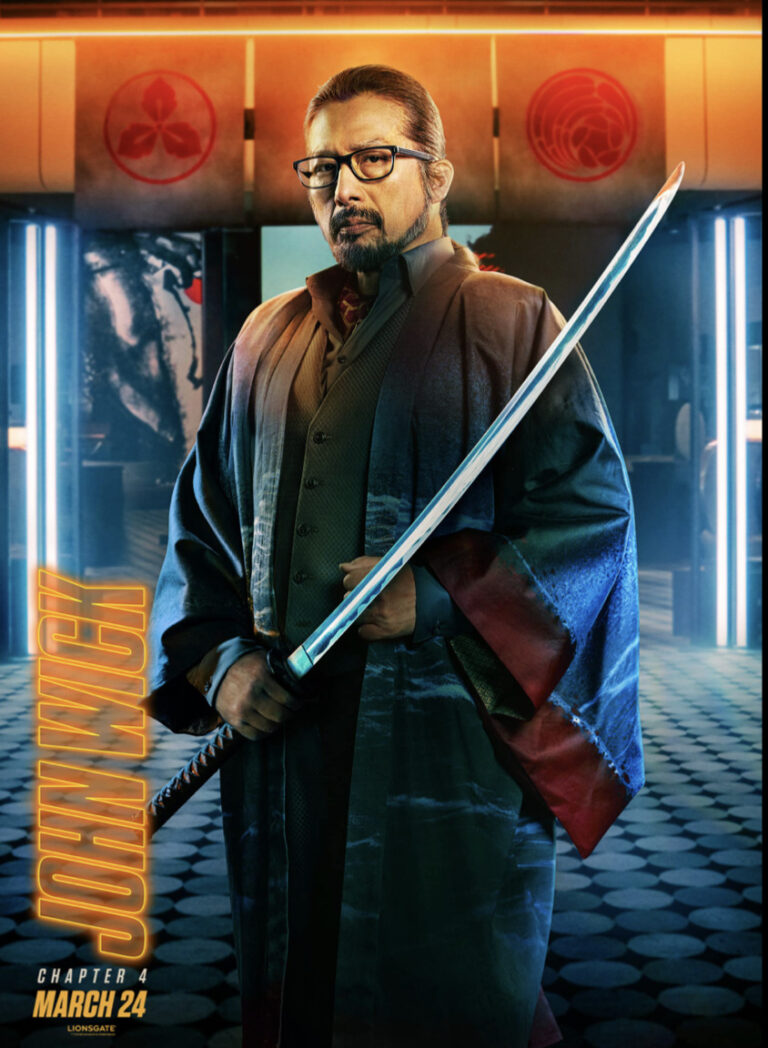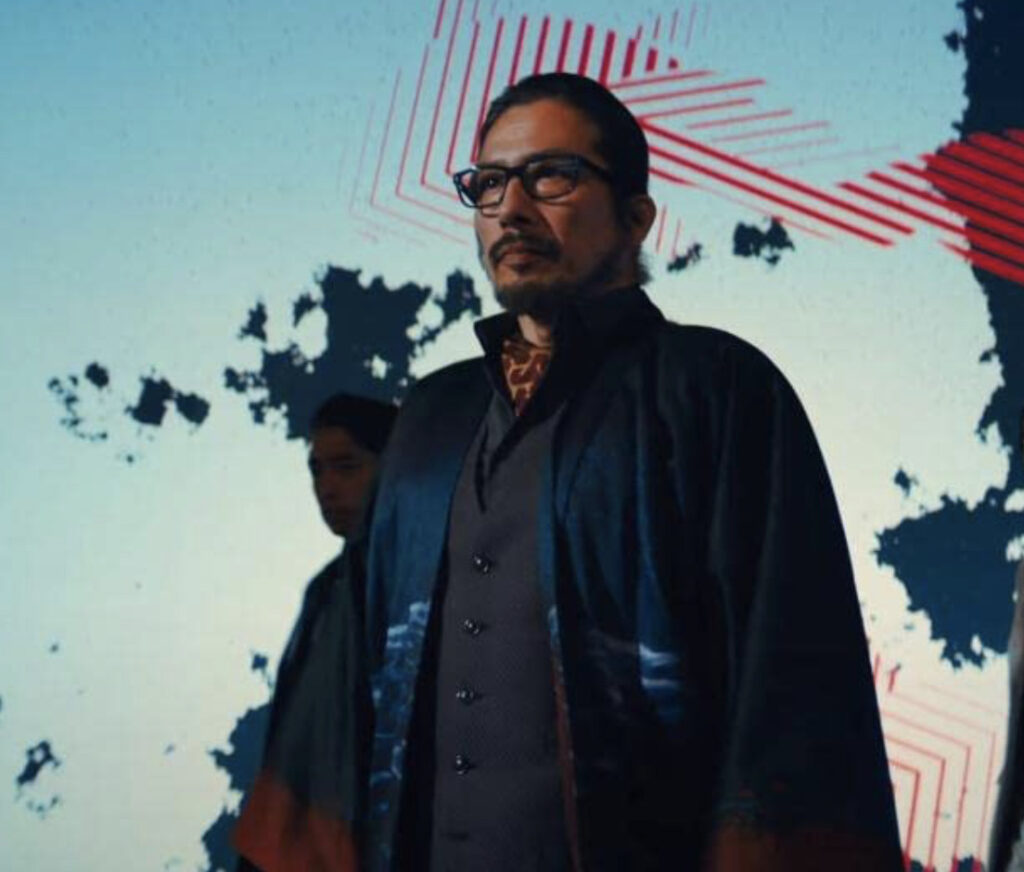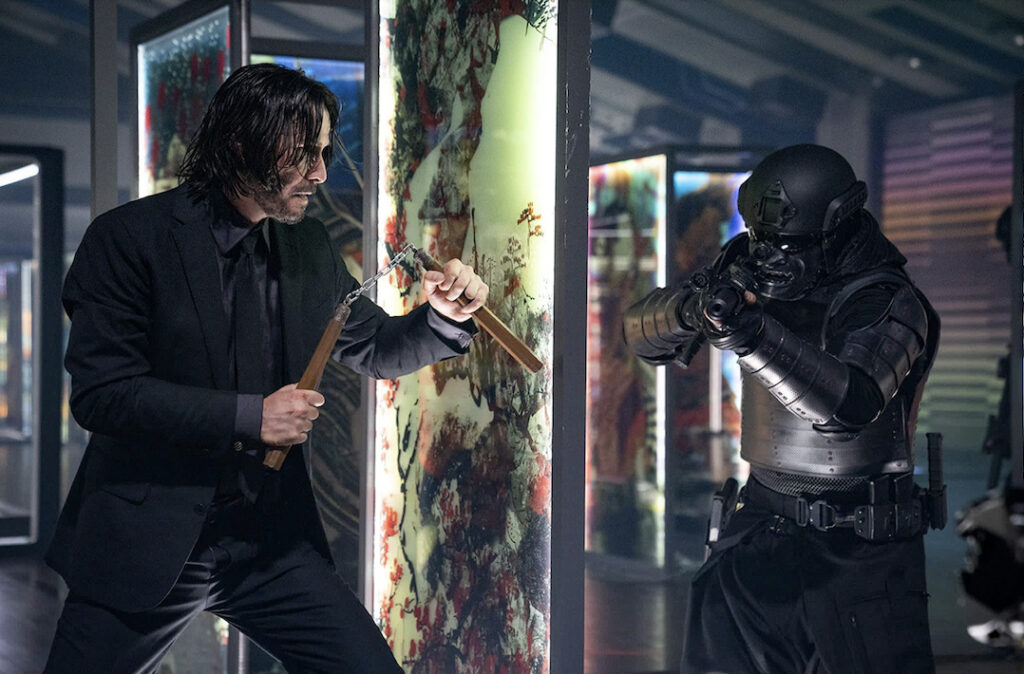
Synopsis : John Wick (Keanu Reeves) uncovers a path to defeating The High Table. But before he can earn his freedom, Wick must face off against a new enemy with powerful alliances across the globe and forces that turn old friends into foes.
- Rating: R (Some Language|Pervasive Strong Violence)
- Genre: Action
- Original Language: English
- Director: Chad Stahelski
- Producer: Basil Iwanyk, Erica Lee, Chad Stahelski
- Writer: Michael Finch, Shay Hatten
- Release Date (Theaters): Wide
- Runtime:
- Distributor: Lionsgate

Exclusive Interview with Actor Hiroyuki Sanada
Q: You made acting debut at the tender age of six, then developed your action skills through the Japan Action Club during your early teen years. Do you still use the teachings or techniques of Sonny Chiba who taught you at that time? What was the first thing in mind you might apply to his method of teaching when you are making this film?
Hiroyuki Sanada: First of all, safety comes first more than anything else. When you do intense action scenes, you can be bold with the actual performance, but you must prepare carefully. Because of this solid preparation, you can do your best in the filming of your scenes. It’s really all about the preparation, particularly when heading into the scene. Each time, you assume the worst that could happen and so you can deal with it. I still have that kind of basic instinct and think that’s what kept me alive.
Q: I heard that you were offered the role of Zero in the previous “John Wick: Chapter 3 – Parabellum” but you weren’t able to appear in that film due to conflicting schedules with “Avengers: Endgame” [he played Akihiko, a Yakuza boss]. What was the main reason that made you want to appear in this film?
Hiroyuki Sanada: Actually, I had to leave the previous film due to an injury. I was hurt during the training for “John Wick: Chapter 3 – Parabellum.” I felt sorry that I had to leave that film. Chad (Stahelski) contacted me again this time and said, “I’ve got your role ready! This time, it’s the role of John Wick’s old friend, and their relationship is as if they had grown up like brothers.” I immediately said to him, “I’ll do it!” More than that, I’m grateful that you gave me another chance. I jumped at the feeling that I should return this. I was able to work with Keanu again, and the role of that old friend was one in which I could project our actual relationship since we have known each other for many years. I jumped at it with a ready and willing answer, “Yes.”
Q: You worked with Keanu in “47 Ronin.” In teaming up with him for the second time, what do you think is the essence of his appeal? His physical strength and preparation for the film is impeccable. He also has a strong desire for action, but what do you think are the elements that make him so attractive?
Hiroyuki Sanada: After all, he really hasn’t changed much. He is always humble, tries to be strict with himself and is kind to others. He has a typical samurai-like appearance, which is what makes him really attractive and he’s also a really hard worker. He says, “I’m a little bit clumsy,” so maybe that’s why he practices more than others, to the point that he hurts himself, but he’s gradually stepping up his skills which is wonderful. That’s also something about him that hasn’t changed at all.

Q: In this film, actress Rina Sawayama, who’s primarily known as a singer {she has a song,”Eye for an Eye,” in the film] plays Akira, the daughter of Shimazu, the character you play. She does a lot of action in her scenes. Did you give any advice or guidance to help her with her performance?
Hiroyuki Sanada: We had a three-week stunt training period, and she started training before I did. After all, it’s not only about memorizing the choreography, but also how to use the eye level to show it effectively in front of the camera. Because we practiced every day on the practice field, I taught her detailed techniques, such as which movements are more effective to use for fighting. What I noticed was that I checked every day, and when it was my first time doing a scene [with her], I spent as much time together as possible. During the training sessions, we tried to build up the bond between a father and daughter, reading our lines together once a day and practicing standing. By the first day of shooting, we were really like a parent and child. She was confident in her role, so I think she did a great job.
Q: The character Caine — played by Donnie Yen — and you as Shimazu, had several amazing action sequences together. Yen has also been acting in front of the camera for quite a long time. What did you learn about his approach to his role, and what exchange did you have with Donnie regarding the performance?
Hiroyuki Sanada: Yes, there was an exchange of opinions. After all, he had a lot of ideas, including a certain look to his character — he did various things in his own way. Then, we tried to figure out how to apply and define each other’s characters and their emotions in our action choreography. In the process, we ended up coming up with various ideas. I thought we should do it this way or that, and we exchanged opinions and then made it all come together. While we were doing that, Director Chad Stahelski was watching. We felt that he was enjoying the chemistry we had in developing the scenes and our characters.
Q: Were there aspects of director Chad Stahelski’s on-site production and directing approach that Japanese directors don’t have? What was it about his craft that appealed to you?
Hiroyuki Sanada: It’s not that Japan doesn’t have these types of directors, but he has a very clear vision, and is very familiar with action. I feel like the staff and cast had already decided what percentage that needed to be given in each scene. Everyone — the staff and cast — believes in each of their jobs and that gives us a certain freedom. That’s why I felt like I was able to accurately judge what came out from them. Chad’s advice was very specific and easy to understand — he really listened to our opinions. I felt like we got along well.
Q: In this film, there is a set which reflected Japanese culture that was there as the background for your scenes. Did you have any input or advice for them? It was quite an intriguing design.
Hiroyuki Sanada: The design of the hotel itself was based on a mixture of Japanese and Western styles. It was set up to please foreigners. It didn’t need to be a pure Japanese style, I made some corrections to things like the angle where it was placed and how the people there were using those weapons and such, but basically it’s really a “John Wick” style, everything in the “John Wick” world. So in the end, it didn’t really stick to a pure Japanese style.
Q : Thank you.

Check out more of Nobuhiro’s articles.
Here’s the trailer of the film.

